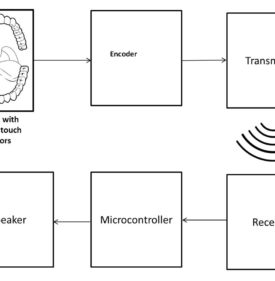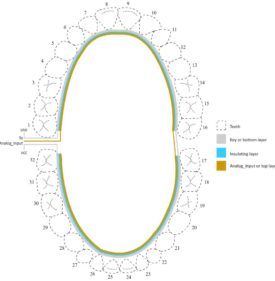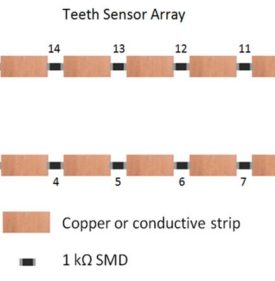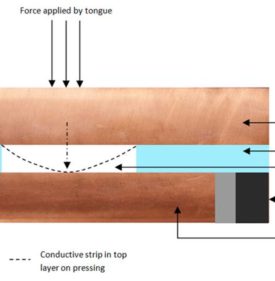TERMS & CONDITIONS
NO PURCHASE NECESSARY TO ENTER OR WIN. A PURCHASE WILL NOT INCREASE YOUR CHANCES OF WINNING.
Contest: 2017 IEEE Maker Project (the “Contest”)
Sponsor: The Sponsor of the Contest is IEEE, 445 Hoes Lane, Piscataway, NJ 08854-4141 USA (“Sponsor”).
Eligibility: Contest is open to residents of the United States of America and other countries, where permitted by local law, who are the age of eighteen (18) and older. Employees of Sponsor, its agents, affiliates and their immediate families are not eligible to enter Contest. The Contest is subject to all applicable state, local, federal and national laws and regulations. Void in locations and countries where prohibited by law.
In the event Sponsor concludes that a potential winner is or should be ineligible, the potential winner will be disqualified, not receive a prize and an alternate winner will be selected, using the methods described in these Official Rules.
Agreement to Official Rules: By participating in this Contest, Participants agree to abide by these Official Rules as established by Sponsor and/or as may be amended or changed by Sponsor subsequent to the commencement of the Contest, in Sponsor’s sole discretion, and without notice. Sponsor reserves the right to review and qualify all Submissions and to reject any Submissions that do not meet the requirements for participation as established by Sponsor or to cancel the Contest in its entirety at the sole discretion of the Sponsor. Decisions of Sponsor are final and binding in all respects.
Entry Period: This contest opens on 16 May 2017 at 10:00 AM ET and all entries must be submitted by 11:59 PM ET on 17 October 2017 (“Promotional Period”).
How to Enter: Submissions must be engineering projects that were built or created using hardware or software technology with the goal of bettering society. The submission must include an image or video of what was built, as well as a description on the tech built. The following items will disqualify a project from being considered as a valid submission:
- The development of the project was paid for by an organization or employer or be built for use at an organization.
- You are not the individual or member of the team that created the project.
- You have not yet started working on the project (Note: projects do not need to be complete when submitted, but they must be started).
- The project is submitted without an image or video depicting it.
- The project is submitted with no title or description or is under 50 words or over 300 words.
Entrants will have two ways to enter this contest. Entrants can enter the contest during Promotional Period through the following channels:
- IEEE Maker Project Microsite: Entrants can participate by submitting projects through the microsite (transmitter.ieee.org/makerproject/). In order to be counted as a valid entry, an entrant must provide their email address prior to submitting their entry. All entries must also comply with Facebook rules.
- Facebook: Entrants who “like” the IEEE Facebook page or any of the participating IEEE staff-managed Facebook pages can submit votes through the IEEE Maker Project application. In order to be counted as a valid entry, an entrant must provide their email address prior to submitting their votes. Once an entrant provides their information, they will be able to interact with all sections of the site. All entries must also comply with Facebook rules.
There is no limit to the amount of times a person can enter through the system. Entries must be original. Entries that copy other entries, or the intellectual property of anyone other than the Entrant, may be removed by Sponsor and the Entrant may be disqualified. Sponsor reserves the right to remove any entry and disqualify any Entrant if the entry is deemed, in Sponsor’s sole discretion, to be inappropriate. Facebook is hereinafter referred to as a “Contest Entity.” Facebook, Google Plus, Instagram, LinkedIn, Random.org, and Twitter are herein referred to as “Contest Entities.”
Entrant’s Warranty and Authorization to Sponsor: By entering the Contest, entrants warrant and represent that the Contest Entry has been created and submitted by the Entrant. Entrants further represent and warrant, if they reside outside of the United States of America, that their participation in this contest and acceptance of a prize will not violate their local laws. By entering the Contest, Entrants also give Sponsor the right to reuse and/or repost their entries on Sponsor social media channels. Entries may also be used for advertising, promotional and other purposes in any and all media now and hereafter known. Entrant names, likenesses and email address will not be used in any promotional and advertising materials.
Prize: Number of Prizes Available, Prizes, Approximate Retail Value and Odds of Winning Prizes: All category winners’ projects will be featured on IEEE Transmitter, The Institute, Potentials Magazine and will receive a digital certificate. Each of the six (6) (Accessibility, Education, Entertainment, Health & Safety, Sustainability, Transportation and Other) winners shall receive a prize of one (1) $50 USD Amazon gift card (or equivalent value in local currency). One (1) second prize of a $250.00 USD Amazon gift card (or equivalent value in local currency) will be awarded. One (1) grand prize of a $500.00 USD Amazon gift card (or equivalent value in local currency) will also be awarded. Prizes will be distributed to the winner after the conclusion of the Promotional Period. Odds of winning a prize depend on the number of eligible entries received during the Promotional Period. Sponsor reserves the right to not award prizes in all categories if the submissions do not qualify.
Selection of Winners: Prize winners at all levels will be chosen based on a content review process. A panel of judges selected by the Sponsor (“Judges”) will review all entries. Entries will be ranked based on three (3) criteria:
-
- Originality
- Innovation
- Benefit to humanity
Notification of Potential Prize Winners: Upon declaring a winner, the Sponsor will notify them via email. All potential winners will be notified via their email provided to the sponsor. Potential winners will have five (5) business days to respond after receiving initial prize notification or the prize may be forfeited and awarded to an alternate winner. Potential winners may be required to sign an affidavit of eligibility (which affirms that they have complied with these rules) as well as a liability release, and a publicity release (where permitted by law), which if issued, must be completed, signed and returned within ten (10) business days from the date of issuance or the prize will be forfeited and may be awarded to an alternate winner. If prize or prize notification is returned as undeliverable or in the event of noncompliance with these Official Rules, prize will be forfeited and may be awarded to an alternate winner.
Release, Publicity, and Privacy: By receipt of the Prize and/or, if requested, by signing an affidavit of eligibility and liability/publicity release, the Prize Winner consents to the use of his or her name, likeness, business name and address by Sponsor for advertising and promotional purposes, including but not limited to on Sponsor’s social media pages, without any additional compensation, except where prohibited. No entries will be returned. All entries become the property of Sponsor. The Prize Winner agrees to release and hold harmless Sponsor and its officers, directors, employees, affiliated companies, agents, successors and assigns from and against any claim or cause of action arising out of participation in the contest. The winning submission will be announced on 27 November 2017 and published on IEEE Transmitter.
Sponsor assumes no responsibility for computer system, hardware, software or program malfunctions or other errors, failures, delayed computer transactions or network connections that are human or technical in nature, or for damaged, lost, late, illegible or misdirected entries; technical, hardware, software, electronic or telephone failures of any kind; lost or unavailable network connections; fraudulent, incomplete, garbled or delayed computer transmissions whether caused by Sponsor, the users, or by any of the equipment or programming associated with or utilized in this Contest; or by any technical or human error that may occur in the processing of submissions or downloading, that may limit, delay or prevent an entrant’s ability to participate in the Contest.
Sponsor reserves the right, in its sole discretion, to cancel or suspend this contest and award a prize from entries received up to the time of termination or suspension should virus, bugs or other causes beyond Sponsor’s control, unauthorized human intervention, malfunction, computer problems, phone line or network hardware or software malfunction, which, in the sole opinion of Sponsor, corrupt, compromise or materially affect the administration, fairness, security or proper play of the contest or proper submission of entries. Sponsor is not liable for any loss, injury or damage caused, whether directly or indirectly, in whole or in part, from downloading data or otherwise participating in this Contest.
Right to Use Entries: By entering the Contest, entrants grant Sponsor a non-exclusive, irrevocable, royalty-free, perpetual, worldwide right and license to reproduce, publish, display, edit and otherwise use the submitted Entries, and entrant’s full name and city and state/province/country of residence, photograph, likeness, voice and institutional affiliation, in print or any offline or online and other media for purposes of editorials, exhibition, advertising, publicity and promotion without additional compensation or permission, unless prohibited by law.
General Prize Restrictions: No prize substitutions or transfer of prize permitted, except by the Sponsor due to prize unavailability. Import/Export taxes, VAT and country taxes on prizes are the sole responsibility of winners. Acceptance of a prize constitutes permission for the Sponsor and its designees to use winner’s name and likeness for advertising, promotional and other purposes in any and all media now and hereafter known without additional compensation unless prohibited by law. Winner acknowledges that neither Sponsor, Contest Entities nor their directors, employees, or agents, have made nor are in any manner responsible or liable for any warranty, representation, or guarantee, express or implied, in fact or in law, relative to any prize, including but not limited to its quality, mechanical condition or fitness for a particular purpose. Any and all warranties and/or guarantees on a prize (if any) are subject to the respective manufacturers’ terms therefore, and winners agree to look solely to such manufacturers for any such warranty and/or guarantee.
Representations and Warranties Regarding Entries: By submitting an Entry, you represent and warrant that your Entry does not and shall not comprise, contain, or describe, as determined in Sponsor’s sole discretion: (A) false statements or any misrepresentations of your affiliation with a person or entity; (B) personally identifying information about you or any other person; (C) statements or other content that is false, deceptive, misleading, scandalous, indecent, obscene, unlawful, defamatory, libelous, fraudulent, tortious, threatening, harassing, hateful, degrading, intimidating, or racially or ethnically offensive; (D) conduct that could be considered a criminal offense, could give rise to criminal or civil liability, or could violate any law; (E) any advertising, promotion or other solicitation, or any third party brand name or trademark; or (F) any virus, worm, Trojan horse, or other harmful code or component. By submitting an Entry, you represent and warrant that you own the full rights to the Entry and have obtained any and all necessary consents, permissions, approvals and licenses to submit the Entry and comply with all of these Official Rules, and that the submitted Entry is your sole original work, has not been previously published, released or distributed, and does not infringe any third-party rights or violate any laws or regulations.
Limitation of Liability: The Sponsor, Contest Entities and their respective parents, affiliates, divisions, licensees, subsidiaries, and advertising and promotion agencies, and each of the foregoing entities’ respective employees, officers, directors, shareholders and agents (the “Released Parties”) are not responsible for incorrect or inaccurate transfer of entry information, human error, technical malfunction, lost/delayed data transmissions, omission, interruption, deletion, defect, line failures of any telephone network, computer equipment, software or any combination thereof, inability to access web sites, damage to a user’s computer system (hardware and/or software) due to participation in this contest or any other problem or error that may occur. By entering, participants agree to release and hold harmless the Released Parties from and against any and all claims, actions and/or liability for injuries, loss or damage of any kind arising from or in connection with participation in and/or liability for injuries, loss or damage of any kind, to person or property, arising from or in connection with participation in and/or entry into this contest, participation is any contest-related activity or use of any prize won. Entry materials that have been tampered with or altered are void. If for any reason this contest is not capable of running as planned, or if this contest or any website associated therewith (or any portion thereof) becomes corrupted or does not allow the proper playing of this contest and processing of entries per these rules, or if infection by computer virus, bugs, tampering, unauthorized intervention, affect the administration, security, fairness, integrity, or proper conduct of this contest, Sponsor reserves the right, at its sole discretion, to disqualify any individual implicated in such action, and/or to cancel, terminate, modify or suspend this contest or any portion thereof, or to amend these rules without notice. In the event of a dispute as to who submitted an online entry, the entry will be deemed submitted by the authorized account holder the email address submitted at the time of entry. “Authorized Account Holder” is defined as the person assigned to an email address by an Internet access provider, online service provider or other organization responsible for assigning email addresses for the domain associated with the email address in question. Any attempt by an entrant or any other individual to deliberately damage any website or undermine the legitimate operation of the contest is a violation of criminal and civil laws and should such an attempt be made, the Sponsor reserves the right to seek damages and other remedies from any such person to the fullest extent permitted by law. This contest is governed by the laws of the State of New Jersey and all entrants hereby submit to the exclusive jurisdiction of federal or state courts located in the State of New Jersey for the resolution of all claims and disputes. Facebook, Google Plus, Instagram, LinkedIn, Random.org, and Twitter are not sponsors nor affiliated with this contest.
Disputes: EACH ENTRANT AGREES THAT: (1) ANY AND ALL DISPUTES, CLAIMS, AND CAUSES OF ACTION ARISING OUT OF OR IN CONNECTION WITH THIS CONTEST, OR ANY PRIZES AWARDED, SHALL BE RESOLVED INDIVIDUALLY, WITHOUT RESORTING TO ANY FORM OF CLASS ACTION, PURSUANT TO ARBITRATION CONDUCTED UNDER THE COMMERCIAL ARBITRATION RULES OF THE AMERICAN ARBITRATION ASSOCIATION THEN IN EFFECT, (2) ANY AND ALL CLAIMS, JUDGMENTS AND AWARDS SHALL BE LIMITED TO ACTUAL OUT-OF-POCKET COSTS INCURRED, INCLUDING COSTS ASSOCIATED WITH ENTERING THIS CONTEST, BUT IN NO EVENT ATTORNEYS’ FEES; AND (3) UNDER NO CIRCUMSTANCES WILL ANY ENTRANT BE PERMITTED TO OBTAIN AWARDS FOR, AND ENTRANT HEREBY WAIVES ALL RIGHTS TO CLAIM, PUNITIVE, INCIDENTAL, AND CONSEQUENTIAL DAMAGES, AND ANY OTHER DAMAGES, OTHER THAN FOR ACTUAL OUT-OF-POCKET EXPENSES, AND ANY AND ALL RIGHTS TO HAVE DAMAGES MULTIPLIED OR OTHERWISE INCREASED. ALL ISSUES AND QUESTIONS CONCERNING THE CONSTRUCTION, VALIDITY, INTERPRETATION AND ENFORCEABILITY OF THESE OFFICIAL RULES, OR THE RIGHTS AND OBLIGATIONS OF ENTRANT AND SPONSOR IN CONNECTION WITH THE CONTEST, SHALL BE GOVERNED BY, AND CONSTRUED IN ACCORDANCE WITH, THE LAWS OF THE STATE OF NEW JERSEY, WITHOUT GIVING EFFECT TO ANY CHOICE OF LAW OR CONFLICT OF LAW, RULES OR PROVISIONS (WHETHER OF THE STATE OF NEW JERSEY OR ANY OTHER JURISDICTION) THAT WOULD CAUSE THE APPLICATION OF THE LAWS OF ANY JURISDICTION OTHER THAN THE STATE OF NEW JERSEY. SPONSOR IS NOT RESPONSIBLE FOR ANY TYPOGRAPHICAL OR OTHER ERROR IN THE PRINTING OF THE OFFER OR ADMINISTRATION OF THE CONTEST OR IN THE ANNOUNCEMENT OF THE PRIZES.
Contest Results and Official Rules: To obtain the identity of the prize winner and/or a copy of these Official Rules, send a self-addressed stamped envelope to Fran Tardo, IEEE, 445 Hoes Lane, Piscataway, NJ 08854-4141 USA.
